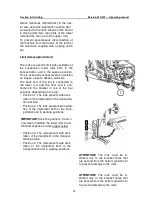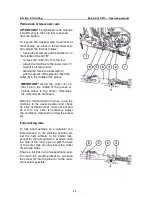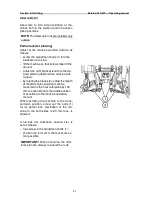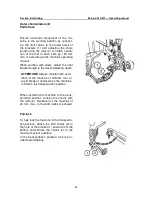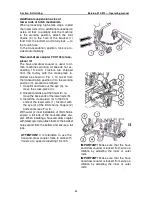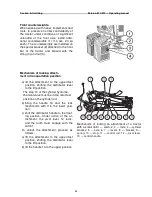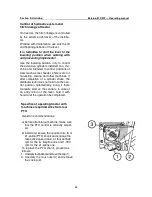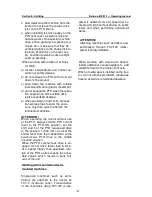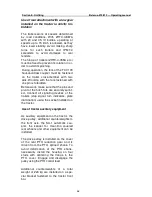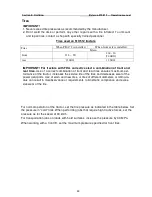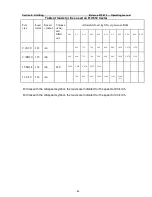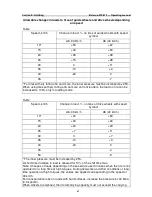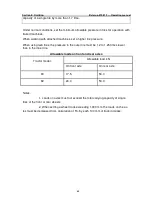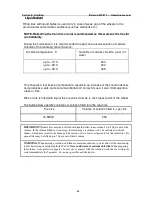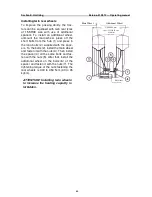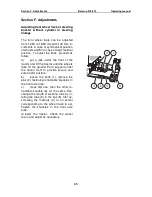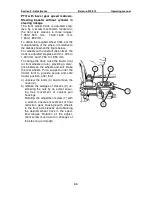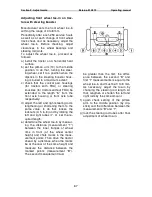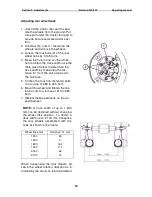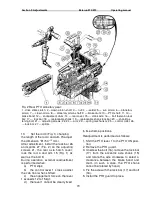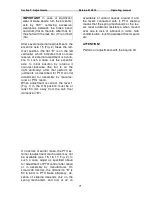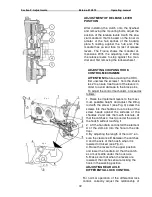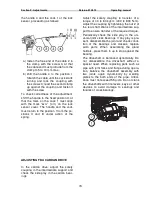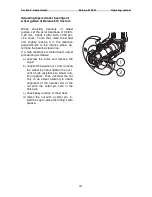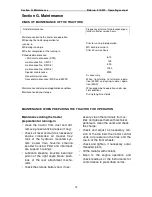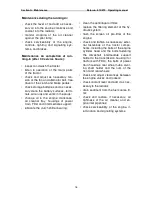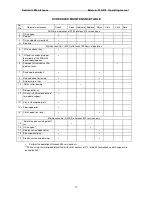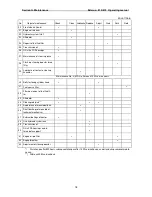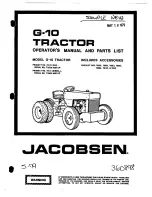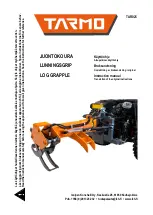
Section E. Unitizing Belarus-510/512 — Operating manual
63
Liquid ballast
Filling tires with liquid ballast is used only in case of weak grip of the wheels to the
ground under unfavorable conditions (such as wetlands etc.).
NOTE: Ballasting the front tires is not recommended as this worsens the tractor
controllability.
During the cold season, it is recommended to apply an aqueous solution of calcium
chloride of the following concentrations:
Ambient temperature, °C
Quantity of calcium chloride, g per l of
water
up to −15°C
up to −25°C
up to −35°C
200
300
435
This ensures a low freezing temperature, results in an increase of the solution density
and produces a safe and economical ballast. At correct its use, it won’t damage tires,
tubes or rims.
When a tire is filled with liquid, the tire valve must be in the highest point of the wheel.
The table below specifies volumes of solution filled into the rear tires
Tire size
Volume of solution filled in, l per tire
15.5R38
250
IMPORTANT!
Radial tires must no be filled with liquid ballast to more than 40 to 50 per cent of the
volume. If the volume filled in is too large, the remaining air volume won’t be sufficient to absorb
shocks, which may result in tire damage. The reason of it is a lower air pressure for the radial tires. Di-
agonal tires may be filled up to 75 per cent of their volume.
WARNING:
When mixing a solution, add flakes of calcium chloride to water and stir the solution up
to full dissolving of calcium chloride CaCl2.
Never add water to calcium chloride.
When preparing
the solution, wear protective goggles. In case of eye contact with the solution, wash the eyes with pure
water immediately for 5 minutes. As soon as possible, call the doctor.
.

